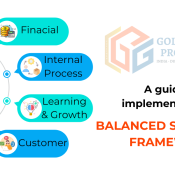
WHY CONSTANT LEARNING TO C-SUIT – II
Skills that senior management needs to develop that make continual training so important?
Companies face a Herculean challenge in today’s fast-evolving work environment. Such is the pace of change that businesses are disappearing more quickly than ever before. If they are to survive, never mind thrive, company leaders must learn to adapt. And here, the operative word is learning.
Much has been said about companies’ capacity to adapt. Much less has been said about companies’ capacity to learn. And yet, in our estimation, a company’s capacity to learn determines its capacity to adapt and, ultimately, its chances of surviving far into the future. If your company isn’t learning, it isn’t growing—and it’s probably on a losing path.
Of course, most companies have a learning and development function within their Human Resources department. Corporate learning has a long, albeit chequered, history. But, as we say some new forces require company leaders to take two urgent actions: first, rethink the purpose of learning within their business; and second, reinvent the organization of learning within their business.
How Roles Have Evolved
Most companies focused on just a subset of job roles in their digital transformation efforts, indicating that many had not taken a broad enough approach to revamp their talent strategy. Successfully navigating this digital acceleration requires a shift and expansion of responsibilities across all roles throughout the organization.

Board of Directors
Traditional responsibilities for boards include oversight of regulatory and compliance issues, monitoring financial statements, advising on company strategy, setting CEO compensation, hiring and firing the CEO, and nominating new directors. Now, the board’s responsibilities are expanding to hold management accountable to a wider range of goals and targets that involve long-term innovation and investment, not just short-term financial performance. In today’s world, the need for a digitally savvy board isn’t just about taking advantage of future opportunities; it is also about mitigating new sources of risk. A board with technologically sophisticated directors will better prepare the firm for long-term success by effectively advising on technological investments, selecting the right CEO for future needs, and managing their learning and refreshment through new director recruitment and training sessions as needed.
Chief Executive Officer
The CEO has long been in charge of setting and directing company strategy, making major corporate decisions, leading the vision and culture of the organization, and serving as the company’s public face. CEOs today need to manage this hefty set of responsibilities within the context of a rapidly changing landscape. They need to develop new business targets and goals and ensure alignment between functional areas and relevant stakeholders. And when a large-scale digital transformation is needed, success will hinge on the CEO’s ability to articulate the case for change, communicate a forward-looking strategy both within the firm and to external constituents, and role model a culture that can drive the transformation.
Chief Marketing Officer
CMOs has traditionally focused on developing and implementing their organization’s overall marketing strategy. This encompassed market research, pricing decisions, advertising strategy, and public relations. Now, CMOs must forecast future developments and adapt their strategies to contend with the ongoing evolution away from mass marketing and toward increasingly targeted and data-driven marketing. Internally, CMOs need to implement technological systems to track KPIs in real-time, automate reports, and accelerate decision-making. Externally, the rapid proliferation of communication platforms and online direct distribution channels makes it imperative for CMOs to ensure consistency in messaging across channels and to grapple with constant, immediate feedback from being under the “social media microscope.”
Chief Financial Officer
The CFO’s customary responsibilities include financial forecasting, budgeting, and reporting, defining P&L investment plans, and managing shareholder activism and investor relations. Now, successful CFOs must also leverage new technologies to automate and streamline financial reporting processes and analyses. They need to maintain a progressive outlook when forecasting in an environment where revenue streams and cost structures are fundamentally changing. As the gatekeepers of much of the data needed for strategic planning and analysis, CFOs can play a central role in evaluating the costs and benefits of technological investments, and in identifying new growth areas and other opportunities for the entire firm.
Filling the Skills Gap
This dramatic shift in job responsibilities is creating a skills gap in many companies’ leadership pipelines that necessitates major changes to talent strategy. Companies may need to rethink traditional promotion pathways to find the right candidates.
Job rotations can also play an important role in building a robust, future-ready leadership pipeline. Although operational roles are traditionally thought of as stepping stones to the highest corporate echelons, today’s high potentials can benefit from rotations through jobs with P&L responsibilities and tech functions.
When the right candidates don’t exist in-house, companies will need to turn to the external labour market. But they’ll need to prepare to pay a premium; individuals with tech and digital skills are in-demand by many companies. This trend also has implications for firms with longstanding strengths in technology, which may find themselves being raided for talent. Companies will need to take proactive steps to retain their top employees.
As the need for change become more pressing, what can you do to stay current? We offer the following advice.
As a leader, it’s important to have a presence when in meetings. It’s important to present well without seeming scripted or formulaic. This could include working on etiquette and confidence.
For C-Suit
- You don’t need to think of yourself as the expert on the leading edge. Having both the requisite leadership abilities and being at the forefront of technical proficiency is quite rare. Instead, endeavour to build the domain knowledge needed to lead organizational change, align the top team around a clear strategy, and ensure coherence across functional areas and work groups.
- Culture is an important facet of any change initiative and cannot be neglected. You play an important role in leading an innovative and creative culture that can reinforce Enhance-driven strategic shifts.
- Surround yourself with the right team: Identify people in the organization that have vital expertise, create a seat for them around the table, and ensure that their voices are heard. You might need to change organizational structure to fully execute your enhancement of transformation.
- On the other side of the coin, you might also need to make painful decisions about switching out other roles if current executives and managers are not prepared for what’s to come.
- Always strive to stay relevant, learn, and adapt – continuously developing skills is critical to avoid falling behind.
- Consider how you can adopt a strategic change to all of the work you do. Things that have helped you succeed in the past may not be the best way any longer. Work to remain open-minded about how things are done. Resistance to the new ways of working is a major barrier to companies reaching their efficiency.
- Learn from the people who are ahead and the people who are behind you (“reverse mentoring”). There is much to learn from the people who are closest to new technologies and customers.
- Staying up-to-date on technological trends is critical in inspiring your team’s confidence and respect for you. If you lose their trust in your capabilities, they will choose to leave.

Senior executive learning and development
Here are some of the ways that continuous learning at top echelons helps business:
- Attracts employees – When even C-level executives are open to learning and enhancing their profiles, it projects a positive image of the organization and attracts the brightest talent.
- Improves loyalty – An organizational culture of learning helps reduce voluntary turnover rates and boosts employee confidence in their management.
- Enhances overall management – Continuous learning allows senior executives to better manage their employees as well as the business and operations in general.
- Stay relevant: Business leaders need to function effectively in this rapidly changing world without a break and be ready to adapt and take on challenges. Updating their skillsets will directly impact the competitiveness of the organization.
- Pay it forward: Continuous learning isn’t just about one senior executive. Lifelong learning helps develop leadership skills which then translates into fostering learning in employees.



